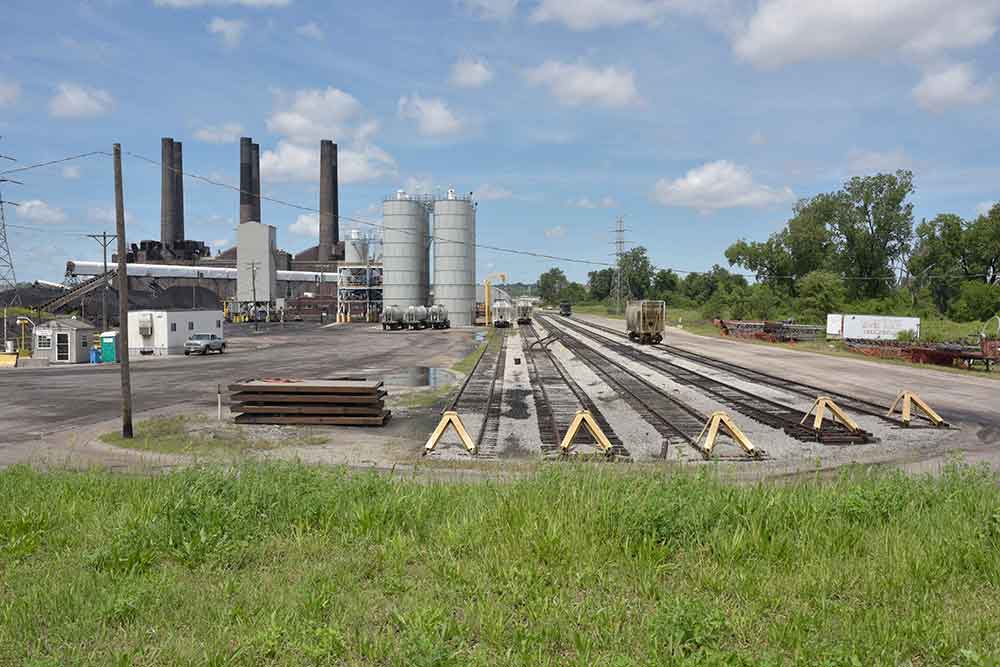

Built in 1928 by the St. Louis based Union Electric and Power Company, the stacks of the “Great Cahokia” power plant are as much a riverside monument as the more well-known arch directly across the river. Built explicitly to process and burn the soft, low-grade high-sulfur coal from the Illinois mines on the bluffs, the plant served the growing East side industries as well as providing power to St. Louis proper. At the time of its construction, it was the largest electrical power plant in the midwest and was said to be the largest between the Mississippi River and the Pacific Ocean. This infrastructural monument now stands idle with its six brick smokestacks—each 265 feet high—silenced in the 1970s by stricter clean air standards. // It was this and similar plants that ignominiously marked St. Louis as the nations leader in coal soot emissions in the late 19th and early 20th centuries. A direct byproduct of the burning of low-grade Illinois coal, St. Louis air has been the subject of derision and study—reaching its sooty zenith on November 28, 1939—a day known as “Black Tuesday”. // In addition to the immediate externalities of coal based power production, we must also be aware of the extraction hinterland of this mode of production. Most of the coal burned in this plant came from company owned strip-mines outside of Freeburg, approximately 20 miles SE in St. Clair County. And while this mine is out of sight from energy consumers in the region, the large, colorful mound just to the North of the plant is a material reminder of the excesses of this method of energy production. // This colorful mound itself stands as one of the many ominous riverside monuments along this stretch of the Mississippi. Composed of excess shale and other debris from the mining process, this pile is known as a spoil tip or gob pile—the overburden of waste rock removed in the extraction process. This mound was part of a complex of coal washers run by the Southern Coal, Coke, and Mining Company. The spoil tip continued to accumulated through the early 1950s, after which time the coal washer was decommissioned. Sited on the floodable side of the levee, this colorful mound is being gradually eroded by the annual inundations that work away at its increasingly riven surface.